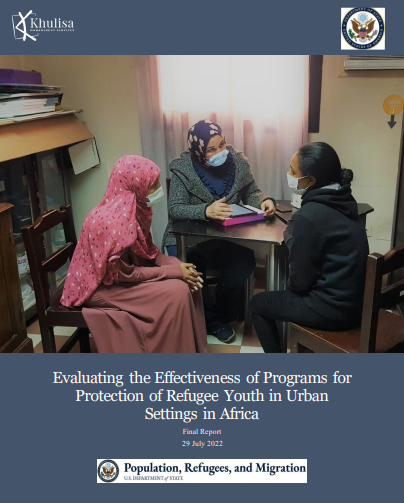How can you implement FE in your evaluations? In this final of our three-part series on FE, Khulisa continues to pick the brilliant brain of feminist and evaluator Professor Donna Podems. This time, we asked Prof. Podems how we can best make use of FE in our evaluations.
“Each strategy for engaging with FE is aimed at encouraging young emerging evaluators and others to consider FE as one of the many approaches that belong in any evaluator’s toolbox.”
Podems, 2018, pp. 53
The Crux of FE
At its core, FE theory critiques gender relations. Its methodology is based on the belief that gender inequality is both structurally and systematically enforced. An evaluation framework that makes use of FE should recognize and give voice to “different social, political, and cultural contexts that privilege some ways of knowing over others” (Podems, 2010, pp. 5). Feminist evaluators strive for equity in gender relations, not equality.
When designing an evaluation that makes use of feminist theory, an evaluator should understand and emphasize “who knows what, who shares what, and who hears what,” with a particular focus on “women and disempowered groups” (Podems, 2010, pp. 5). An evaluator implementing FE would refute that social inequalities are natural or normal and would make this explicit in its analytical process.

Image Sourced from: https://www.betterevaluation.org/en/themes/feminist_evaluation
Challenges to Using FE
- FE is often criticized for its support of advocacy, for “how can an evaluator be neutral if they advocate with their findings?” (Podems, 2018, pp. 50).
- Clients may have preconceived assumptions that FE is only for women due to the word ‘feminist’ in the title.
- The lack of concrete guidance on how to implement FE doesn’t encourage evaluators or clients to overcome their preconceived ideas of what FE is and what it can be used for.
Advantages to Using FE
- FE challenges inequality through equity. Although not alone in this endeavor, FE makes explicit that it gives preferential voice to marginalized groups.
- FE makes its views about knowledge and access to knowledge explicit. FE acknowledges that the way “any evaluator views the world influences their evaluation design,” and that there’s a need to ensure that evaluation findings are “written, visualized, or otherwise presented” in a way that all participants can understand and access. (Podems, 2018, pp. 51).
Concrete Guidance on how to Implement FE: Combine it with Principles Focused Evaluation (PFE)
To overcome the challenge of lack of concrete guidance as to how to implement FE, Podems (2018) suggests combining FE with Principles Focused Evaluation (PFE) authored by Michael Quinn Paton (2017). PFE “examines how a principle guides action, and what happens because of that action” (Podems, 2018, pp. 51). Podems suggests relabeling the 8 tenets of FE (covered in our first Tuesday Tip on FE) as principles to make them more actionable and, therefore, more evaluable. Below are the eight updated principles of FE, incorporating PFE theory:

References:
Podems, D. (2018), Feminist Evaluation and Gender Approaches: There’s a Difference? accessed from https://www.betterevaluation.org/en/resources/discussion_paper/feminist_eval_gender_approaches accessed on 29/03/2021
Podems, D. (2018), Making Feminist Evaluation Practical accessed from: https://idev.afdb.org/sites/default/files/Evaluations/2020-03/Making%20Feminist%20Evaluation%20practical.pdf accessed on 29/03/2021


